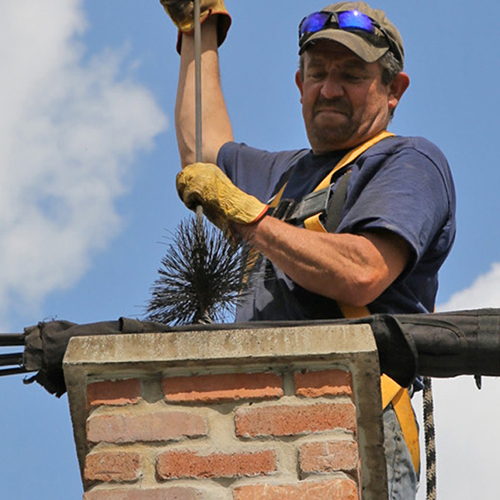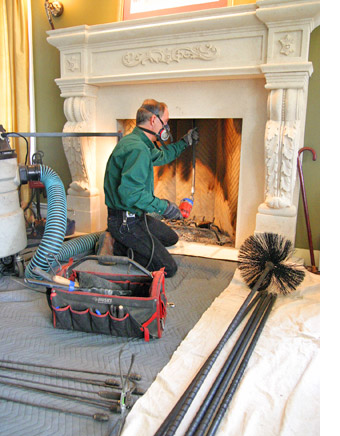Smokeshaft Safety And Security First: Premier Chimney Clean San Jose Providers Introduced
Smokeshaft Safety And Security First: Premier Chimney Clean San Jose Providers Introduced
Blog Article
Smokeshaft Cleansing: A Step-by-Step Overview to Maintaining a Healthy Fireplace
Preserving a healthy and balanced fire place is crucial for the security and effectiveness of your home. Normal smokeshaft cleansing is an important part of this maintenance regimen. In this detailed overview, we will certainly supply you with thorough guidelines on just how to properly clean your chimney, ensuring that it functions optimally and decreases the risk of fire risks. By complying with these guidelines, you will learn how to gather the necessary tools, carry out a visual evaluation, clear debris and build-up, sweep the smokeshaft, and complete the final steps for ongoing maintenance. With a professional technique and interest to information, you can confidently look after your fireplace and appreciate its heat and convenience for many years to come.
Collecting the Required Devices
To begin the procedure of smokeshaft cleaning, the very first step is to gather all the necessary tools. Having the right devices available guarantees a effective and safe cleansing process. The important tools for smokeshaft cleaning include a smokeshaft brush, a ladder, ground cloth or plastic sheets, a flashlight, handwear covers, and a dirt mask.
The chimney brush is the key device used to get rid of soot and creosote buildup from the flue. It is essential to select a brush that matches the size and form of your smokeshaft. Furthermore, a durable ladder is essential to access the chimney safely. Make sure the ladder is steady and positioned on a level surface.
Decline towels or plastic sheets are vital for securing the bordering area from dirt and debris. They help consist of the mess and make clean-up simpler. A flashlight is important for evaluating the chimney's inside for any indicators of damage or blockages. Handwear covers are required to shield your hands from soot and other unsafe compounds, while a dirt mask aids stop the inhalation of debris.
Doing a Visual Evaluation

Utilizing a flashlight, carefully analyze the indoor walls of the chimney for any type of indications of damage, such as splits, loosened bricks, or mortar deterioration. These issues can compromise the smokeshaft's architectural honesty and position a severe security hazard. In addition, look for any kind of signs of water damage, such as staining or efflorescence, as this can suggest a dripping smokeshaft cap or flashing.
Following, check the smokeshaft flue for any kind of obstructions. Seek the presence of nesting products, leaves, or debris that might have accumulated with time (Chimney Sweep San Jose). These blockages can restrict air flow, increase the risk of carbon monoxide gas buildup, and impede the chimney's ability to properly air vent smoke
During the aesthetic inspection, pay very close attention to the chimney crown, which is the top surface that secures the smokeshaft from dampness. Search for fractures or missing out on items in the crown, as these can permit water to get in the chimney and trigger significant damage.
Clearing Debris and Accumulation
After finishing the aesthetic assessment, the following action in chimney cleaning entails clearing debris and build-up to ensure the appropriate functioning of the fire place. In time, debris such as leaves, branches, and animal nests can gather in the chimney, blocking the flow of air and triggering possible fire dangers. In addition, the buildup of creosote, a tar-like material, is a typical trouble in chimneys. Creosote is created when wood or fossil fuels are melted, and if not gotten rid of consistently, it can cause chimney fires.
A chimney brush, particularly made for this purpose, is used to remove loose debris and creosote from the chimney walls. It is necessary to pick a brush that matches the this link dimension of your smokeshaft to make certain effective cleaning.
To start, put the brush right into the smokeshaft and relocate it backwards and forwards, rubbing the walls to displace any type of particles or creosote. Utilize a sweeping movement to make certain comprehensive cleaning. It is advised to begin with the bottom and function your method up. When the cleaning is complete, utilize a vacuum cleanser or a chimney brush expansion to get rid of the dislodged particles from the fire place.

Brushing Up the Smokeshaft
The sweeping of the chimney is a vital action in keeping a healthy and balanced fire place. With time, residue, creosote, and various other debris can accumulate in the chimney, blocking the circulation of air and possibly triggering a harmful accumulation of combustible products. Routine chimney sweeping not just makes certain correct ventilation yet additionally stops the danger of chimney fires.
When it comes to chimney sweeping, it is highly advised to work with a specialist chimney sweep. These specialists have the knowledge and devices required to securely and efficiently get rid of the gathered debris from your smokeshaft.
It is very important to keep in mind that the frequency of chimney sweeping depends upon a number of aspects, such as the type of gas used, the amount of use, and the kind of chimney. As a basic general rule, it is suggested to have your smokeshaft examined and brushed up a minimum of annually.
Final Steps and Upkeep
To ensure continuous maintenance and ideal efficiency, it is necessary to apply regular maintenance methods and adhere to a detailed set of final steps for your fire place. After finishing the smokeshaft sweeping procedure, the initial step in the final upkeep is to evaluate the smokeshaft cap and spark arrestor. These components prevent debris, animals, and rainwater from going into the smokeshaft. Examine for any kind of indications of damages or clog, and clean or repair them if required.

Examine the within the fire place for any kind content of signs of wear and tear, such as cracks, loose blocks, or harmed mortar. These problems can impact the structural integrity and safety of the fireplace. Seek advice from a professional chimney move or mason to address them promptly. if any kind of troubles are detected.
Finally, consider installing carbon monoxide detectors near the fire place and throughout your home. These tools can detect the presence of this unsafe gas, giving a very early caution system in situation of a chimney malfunction. Frequently check and replace the batteries in these detectors to guarantee their performance.
Final Thought
To conclude, following a step-by-step guide for chimney cleaning is essential in maintaining a healthy fire place. By collecting the needed devices, doing an aesthetic assessment, removing debris and build-up, and brushing up the smokeshaft, home owners can make sure the security and effectiveness of their fireplace. Regular maintenance and cleaning will aid protect against smokeshaft fires and enhance air quality in the home. It is vital to prioritize smokeshaft cleansing as a part of overall home upkeep.
The vital tools for smokeshaft cleaning consist of a chimney brush, a ladder, decline fabrics or plastic sheets, a flashlight, handwear covers, and a dust mask.
A smokeshaft brush, particularly made for this function, is used to eliminate loose particles and creosote from the chimney wall surfaces. Regular smokeshaft brushing up not only look at this site ensures appropriate ventilation however additionally stops the risk of chimney fires.
When it comes to smokeshaft sweeping, it is highly suggested to hire an expert smokeshaft sweep. After finishing the chimney sweeping process, the initial step in the final upkeep is to evaluate the smokeshaft cap and trigger arrestor.
Report this page